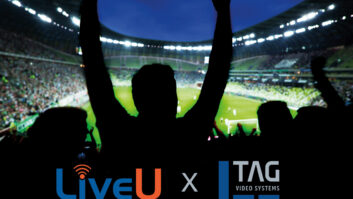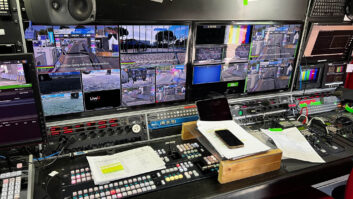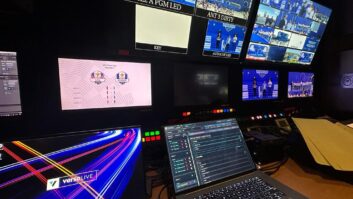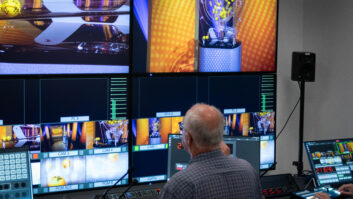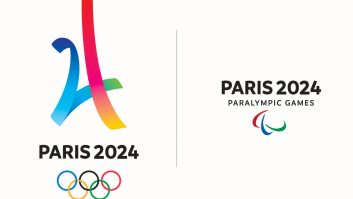Cellular uplinking specialist LiveU has demonstrated a live wireless 3D transmission and will repeat the exercise at IBC, writes Adrian Pennington. LiveU’s technology is gaining traction among sports broadcasters and franchises as a portable TX unit that can backhaul HD signals via H.264 in remote, crowded or even underground spaces.
At Broadcast Asia in Singapore last month the company showed a world first of its capability to send a stereo image from a Panasonic 3D camcorder – admittedly from a stationary position by a golf course – to a PC on its stand over mobile networks.
A similar demo will be performed at IBC. LiveU says its LU60 product is already fully capable of supporting the function.
LiveU’s patented technology simultaneously bonds multiple 3G, 4G LTE, 4G WiMAX, and Wi-Fi modems and then aggregates bandwidth over multiple carriers with a powerful inbuilt RF antenna to collectively provide enough throughput to transmit 1080i HD signals.
Weighing 5kg and powered by industry-standard batteries (such as Anton/Bauer or IDX), the LU60 is housed in a backpack worn by the camera operator. Video ingest is from any camera or video source via SD-SDI, HD-SDI, HDMI, analogue input or FireWire.
“The RF antenna allows the LU60 to boost signals from proximate wireless towers and look for other cell towers to gain access to alternate wireless systems,” said Ronen Artman, LiveU’s VP of Marketing.
Indeed LiveU has conducted successful tests transmitting HD video from Madison Square Gardens’ tunnel walk, which is a notorious dead spot for sports broadcasters.
The video stream is usually split among up to seven channels simultaneously for transmission. On the receive side, software installed on any internet-connected Windows PC receives those streams and reconstructs HD video into its original frames at sub-second latency.
The system has been successfully deployed by major sports networks at the Olympics, the FIFA World Cup in South Africa and the NBA All Star Weekend.
NBC used LiveU to provide ENG coverage at the 2008 Beijing Games while the technology was also used to bring NBA basketball to Chinese fans through NBAChina.com earlier this year. Princeton’s rowing team has also used it on board boats for streaming training video back to shore.
LiveU units provided live Media Day coverage at each of the past two Super Bowls and have been deployed by CBS, TMZ and the NFL Network to give viewers behind-the-scenes access of ancillary events leading up to the big game.
“We are putting a lot of effort into improving our algorithm and to transmit in places traditionally very hard or impossible for satellite to transmit from – in hi-rise blocks and towers, in subways, tunnels, from moving vehicles and within crowded spaces,” said Artman. “In crowds,, especially where there is a lot of competing cellular activity in a very small area, the difficulty of transmitting a resilient video at satellite quality can be tremendous.”
For live sports, LiveU is most applicable when used to augment rather than replace a standard satellite broadcast infrastructure. Camera operators can deliver mobile, on-the-spot video for quick updates, sideline and changing room interviews, roaming crowd shots, or shots from moving vehicles. The signals from LiveU units would typically not be routed via the OB, but streamed back to the studio for vision mixing.
